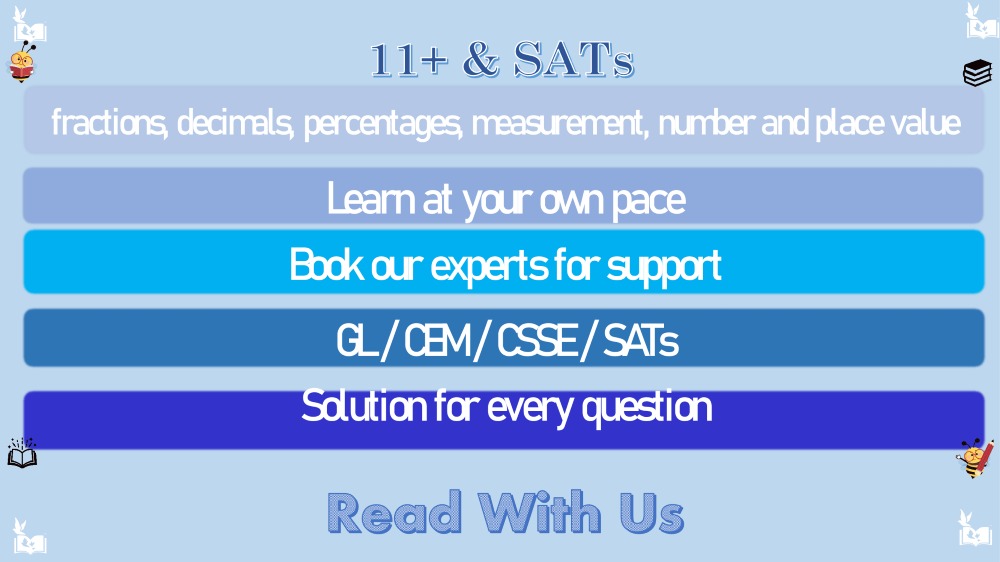Fractions, Decimals and Percentages
Fractions, Decimals and Percentages
Fractions, Decimals and Percentages, Measurement, Number and Place Value

Fractions, Decimals and Percentages
Convert between fractions and decimals
Equivalent fractions
Fractions and Decimal Problems
Fractions, Decimals and Percentages
Multiply and Divide percentages
Multiply and divide fractions
Ordering decimals
Ordering fractions
Rounding decimals
Comparing measures
Comparing measures time
Convert between metric units
Measuring and reading scales
Metric and imperial units
Money, length, mass and volume problems
Perimeter and area
Volume
Counting multiples
Negative numbers
Number problems
Roman numerals
Read, write, order and compare numbers
Rounding numbers
End of module assessment